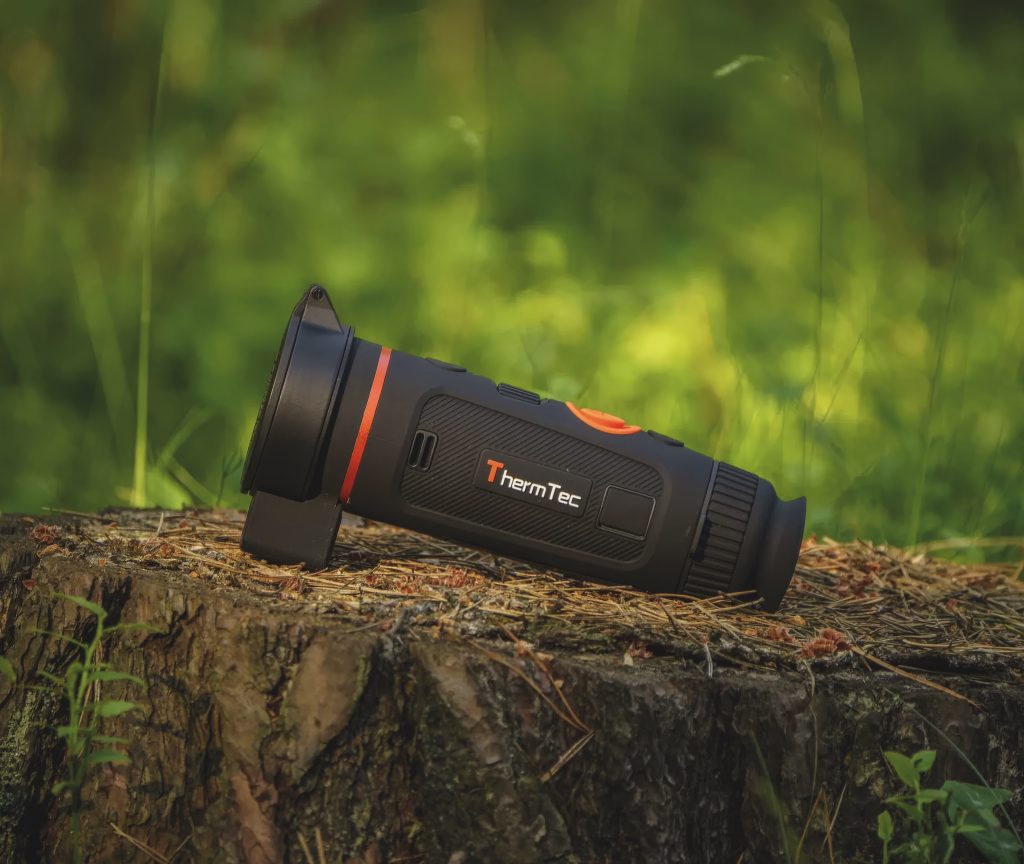Win CENS ProFlex DX5 earplugs worth £1,149 – enter here
Buying your first PCP air rifle – what to expect
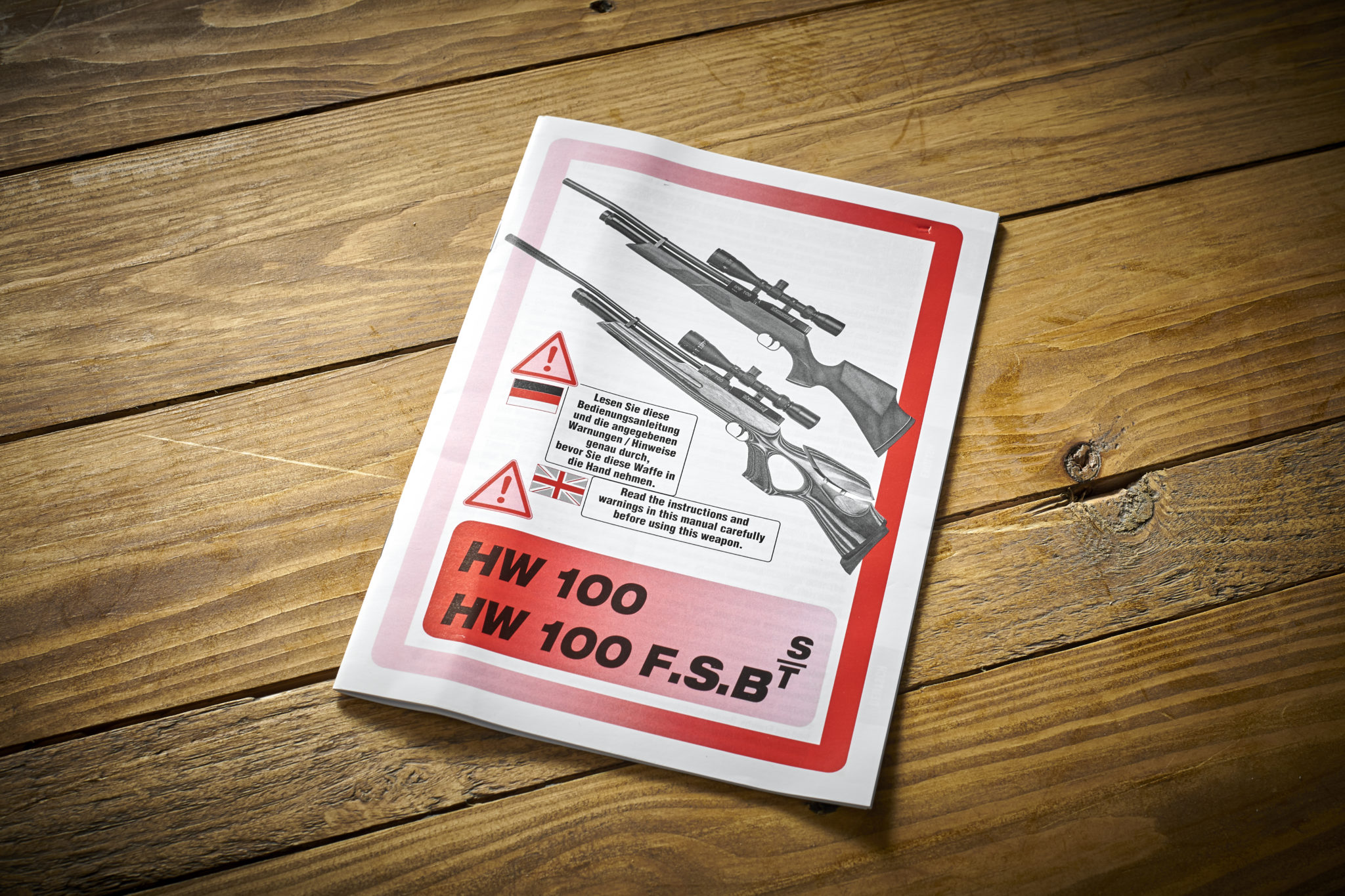 HW100 Accessories Included With The Gun
HW100 Accessories Included With The Gun
We’re all more that the last two years haven’t been great, but one of the few positive things to come out of the lockdowns has been an influx of people to our sport. Some are brand new to airguns, while others have returned after a long absence, possibly not having handled an airgun since their youth. Which is why advice on buying your first PCP air rifle is so essential.
It’s an exciting time to be a part of the airgun community, with many people now heading straight for a pre-charged pneumatic rather than going the more traditional route of starting off with a spring-powered rifle.
So I thought I’d offer a few tips to anyone buying your first PCP air rifle, letting them know just what to expect when they open the box and how to make the most of it, and that means the information supplied with the gun just as much as any physical item.
The rifle I’m using as my Guinea pig is a Weihrauch HW100 S loaned to me by Hull Cartridge. Outside of dedicated manufacturer rifle kits and retailer combos, which usually include a scope and mounts, this has to be one of the most complete rifle-only packages I’ve ever seen.
It includes a couple of optional extras that may make some newcomers scratch their heads at first, but will definitely add to the overall shooting experience once they understand their value. But although I’m focusing on this particular rifle, most of the points I make will apply to pretty much any type of modern PCP.
I’m deliberately not concentrating on the gun itself this time round. Most of the items listed here are definitely not sexy products. They are, however, the unsung heroes of the airgun world and will help ensure you keep shooting for longer and enjoy yourself without a hitch while doing so.
Buying your first PCP air rifle – read the manual
When it comes to buying your first PCP air rifle, for any gun for that matter, it’s important to acquaint yourself with the manual even before you take your new purchase out of the box.
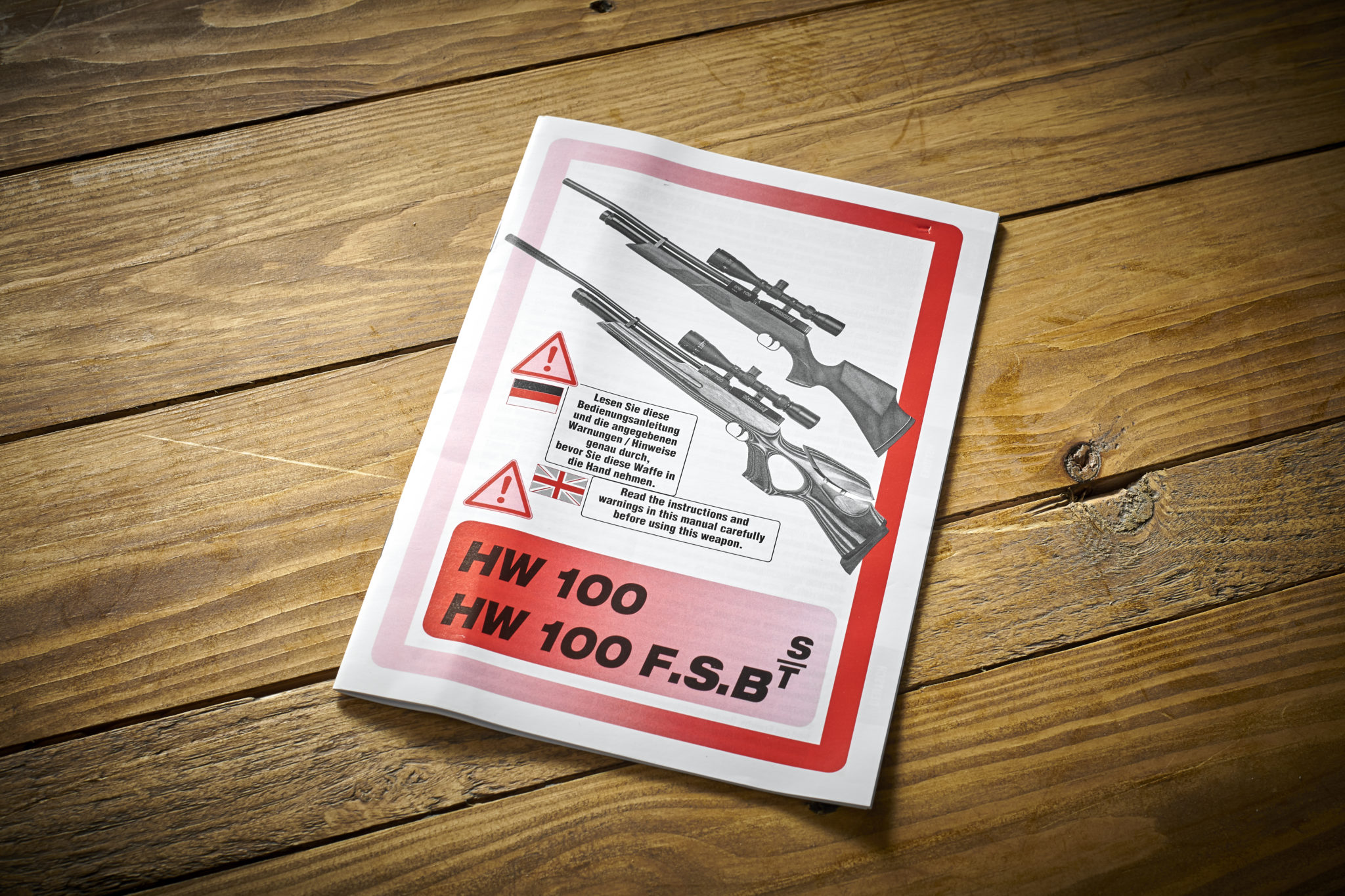
A user manual may not make terribly exciting bedtime reading, but understanding its contents will help keep both you and your rifle safe.
There are two very good reasons for this when it comes to buying your first PCP air rifle. Understanding how your new rifle operates will ensure you don’t damage the gun. And even more importantly, understanding how it works will ensure it doesn’t end up damaging you or anybody else.
It really is vital to understand how the gun is cocked, how the magazine is loaded, inserted and removed from the action, how the safety catch operates and how to make the gun safe. Without knowing all this, you won’t be able to check that the rifle is perfectly inert and is safe to handle. Safety must always come first.
Buying your first PCP air rifle – the test sheet
Some rifles come with a sheet of paper that shows how the rifle has performed over the chronograph. This test will have been carried out either when the gun was at the factory or after it had arrived at the importer’s. (Click here for our list of the best chronographs, as well as our list of the best airgun kit you wouldn’t want to leave at home).
The test sheet that came with my HW100 S in .22 calibre shows that Weihrauch FT-Exact pellets were used for the test, with one magazine’s worth of 13 pellets having a variation in velocity of just four feet per second and the gun having a muzzle energy of 11.53 foot pounds. (Click here for our list of the best airgun pellets).
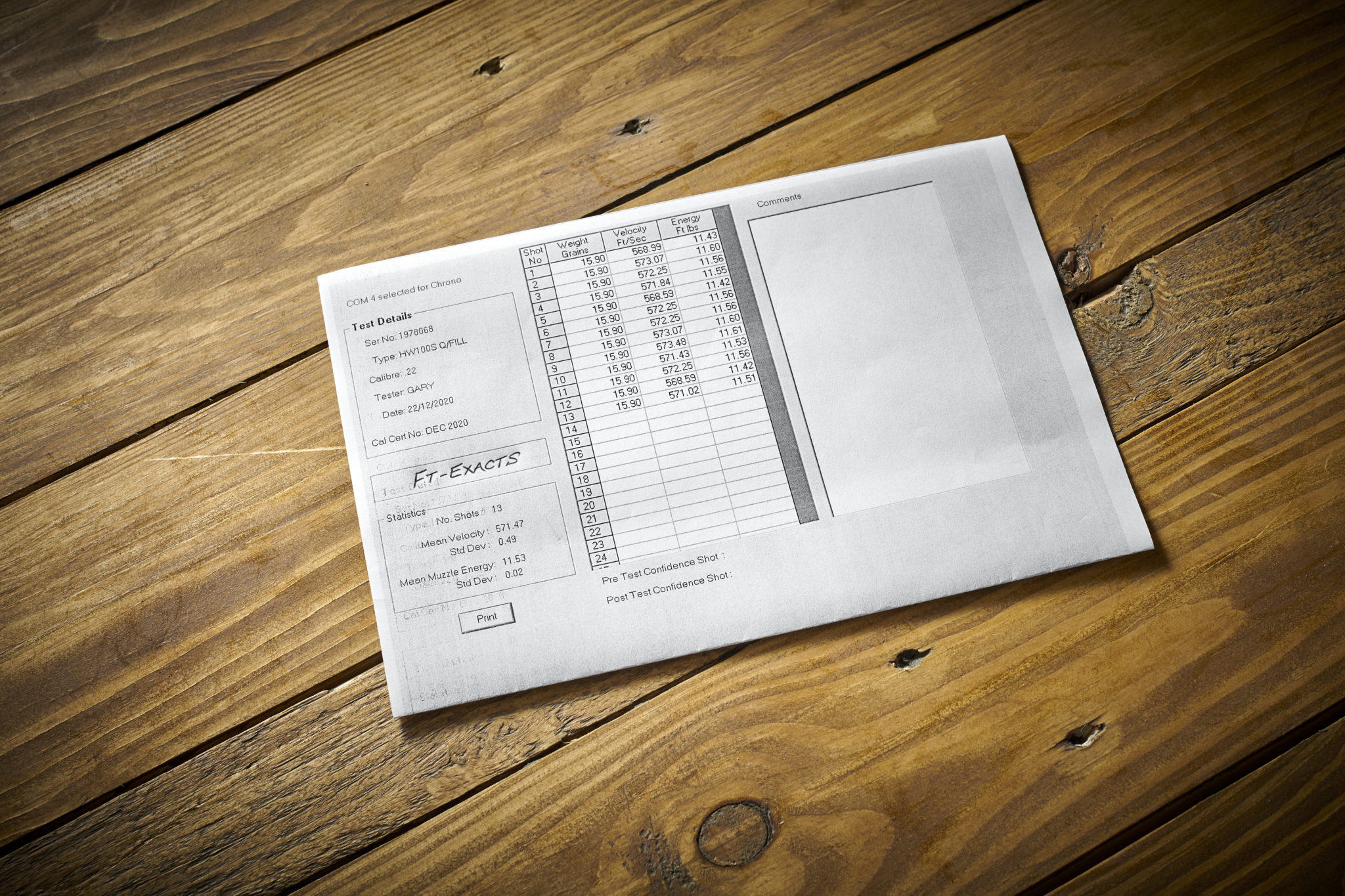
The test sheet is proof that the rifle is not only UK-legal, but is capable of delivering a super-consistent velocity straight out of the box
This velocity spread is excellent, especially for a brand new gun, and the spread should only shrink further as the rifle continues to bed in with further use. It’s important to note that the muzzle energy is within the UK legal limit of 12 foot pounds.
While this proves the rifle was legal when it was tested, muzzle energy can change over time and when different ammunition is used, and once a shooter has taken ownership of a rifle it’s their responsibility to ensure it stays within the limit, not the manufacturer’s, importer’s or retailer’s.
Do also note that this test is all about finding out the rifle’s velocity and energy, not necessarily its accuracy. While FT-Exacts might very well prove to be an excellent match for this barrel, it’s up to the shooter to determine the optimum ammo for their particular air rifle, which means plenty of testing. However, it’s certainly a good place to start for any new shooter who doesn’t already have several different tins of pellets to hand.
Fill probe
In order to fill your PCP with compressed air, you’ll need to connect the fill line to the rifle using either a snap-on Foster fitting, or in this case by using a fill probe that’s inserted into a port on the gun. The probe is usually manufacturer-specific, and in some cases it’s rifle-specific, with some manufacturers using two or more different systems, depending on the age of the gun and the exact model.
Identifying a fill probe isn’t always easy. Some probes look very similar to others, and can even be inserted by mistake into the fill port of the wrong rifle, but this will just waste air and also runs the risk of damaging the little O-rings that help make an air-tight seal.
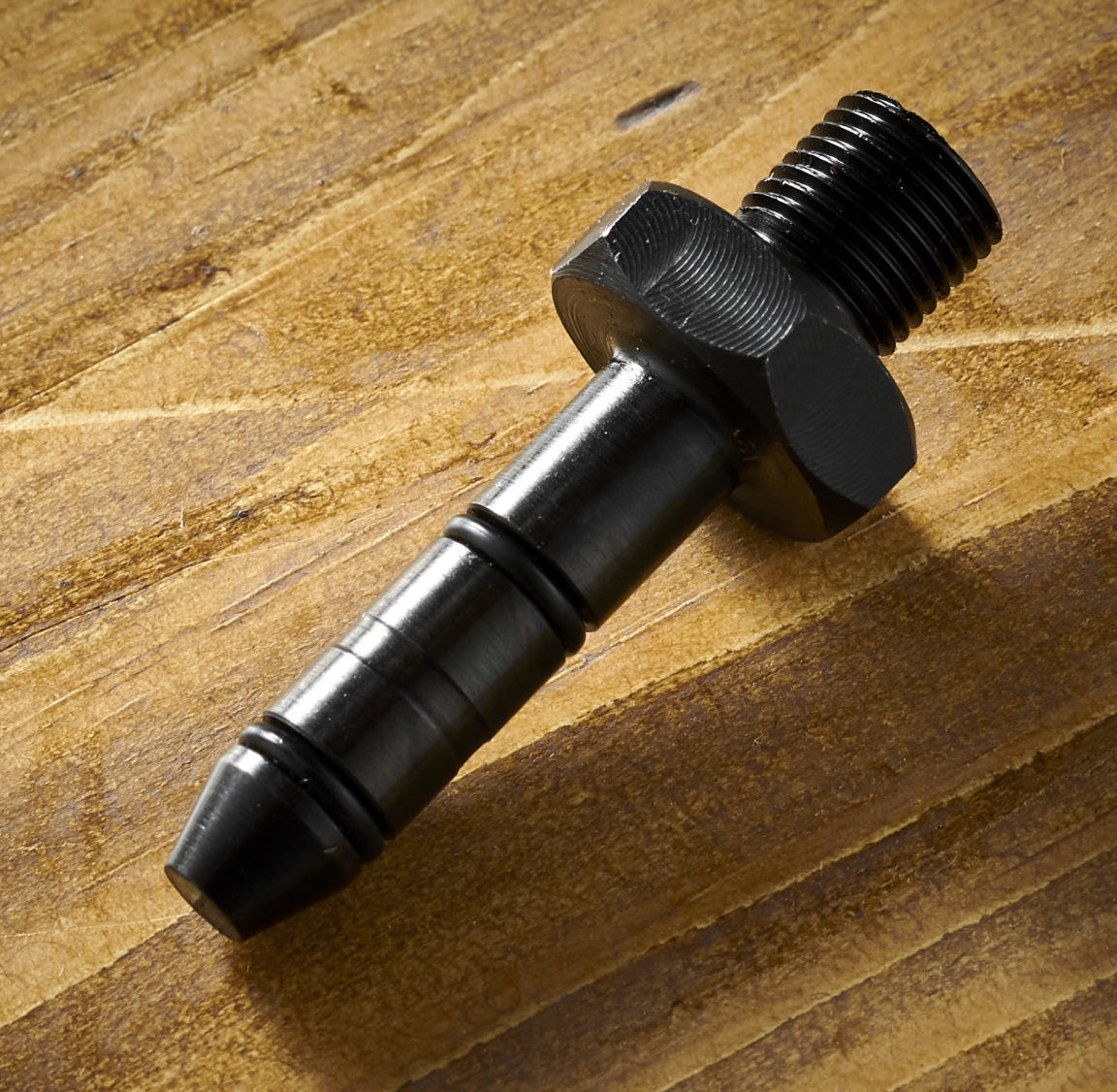
This fill probe is fairly easy to identify, while some others look very similar to each other – using a mismatched probe could damage the probe or the gun
The Weihrauch probe seen here is black, while most are bare metal, so this one is quite easy to identify. Otherwise make sure you remember which probe goes with which gun, marking them up and storing them separately if necessary. I keep my probes in a small tin, but a small zip-lock bag also works well.
It’s always a good idea to inspect the O-rings before and after use, as a damaged O-ring may not seal properly and will need to be replaced. Some rifles come with a spare O-ring kit, but many don’t, and having to source a replacement for a damaged O-ring can mean several days of frustration waiting for that small packet to arrive in the post before you can go shooting.
O-rings don’t need much maintenance, but they should be given a very thin coating of silicone grease every now and then – I use food-grade grease that I bought from Amazon. Go easy when applying it. There should be just enough grease to give the O-ring a slick look and feel.
If you can see a layer of grease sitting on the ring then you’ve applied too much. One way to ensure you use just the right amount is to rub some between your thumb and forefinger, then apply it directly to the O-ring.
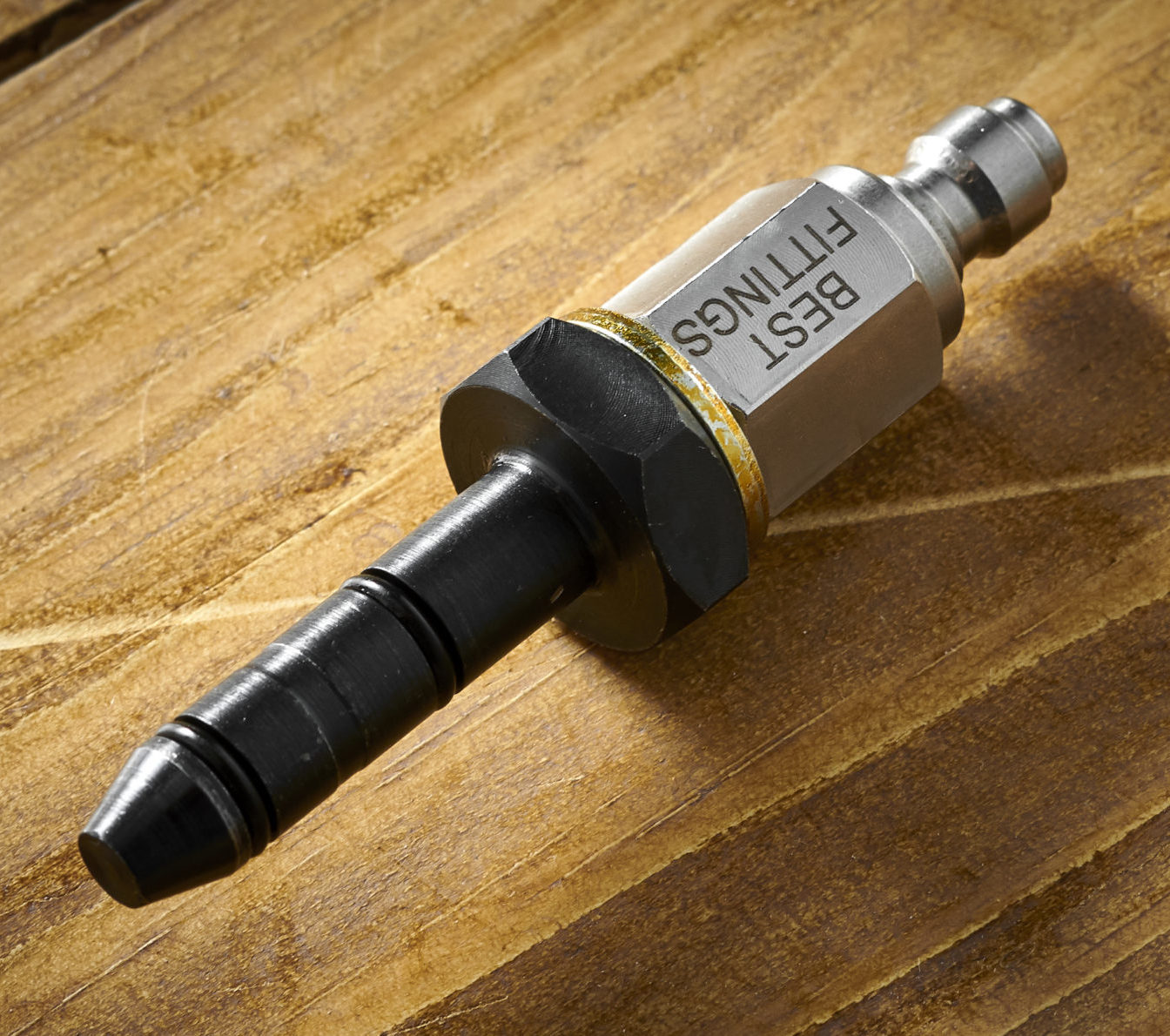
Mike’s added a Best Fittings quick coupler to his own Weihrauch fill probe, which lets it be snapped on and off the fill line with ease
Because the probe is being inserted into the fill port of the rifle, it’s essential to keep it clean. A friend of mine once neglected to do this and his rifle failed to fill or hold air properly, necessitating an expensive and time-consuming trip to the gunsmith for a full strip-down, clean and reassembly.
The probe needs to be attached to the fill line (air hose) on either your charging (dive) cylinder or your stirrup pump, and this can be done two ways, either by screwing it directly to the fill line or to a quick coupler, which lets you quickly switch between probes from different manufacturers without having to unscrew them.
I recommend adopting this system even if you swear you’ll only ever have the one rifle, as it gives you the ability to fit the fill probe to the rifle before attaching it to the fill line, and this means you won’t be putting any strain on the rifle, the probe or the hose. It also means the probe can be detached and stored separately, as mentioned above.
Dust plug
Dust and dirt are the sworn enemies of a PCP, and the fill port must be protected even when the gun is not actually being pumped full of air. Some PCPs use a protective metal or plastic collar that is either pulled or twisted to reveal the port, then closed after the gun’s been filled.
Alternatively, as with the HW100 S, the fill port may be protected by a dust plug, which is usually made of metal or Delrin, and may or may not also have a little O-ring to create a secure seal. If so, a thin smear of silicone grease will help extend the life of this O-ring.
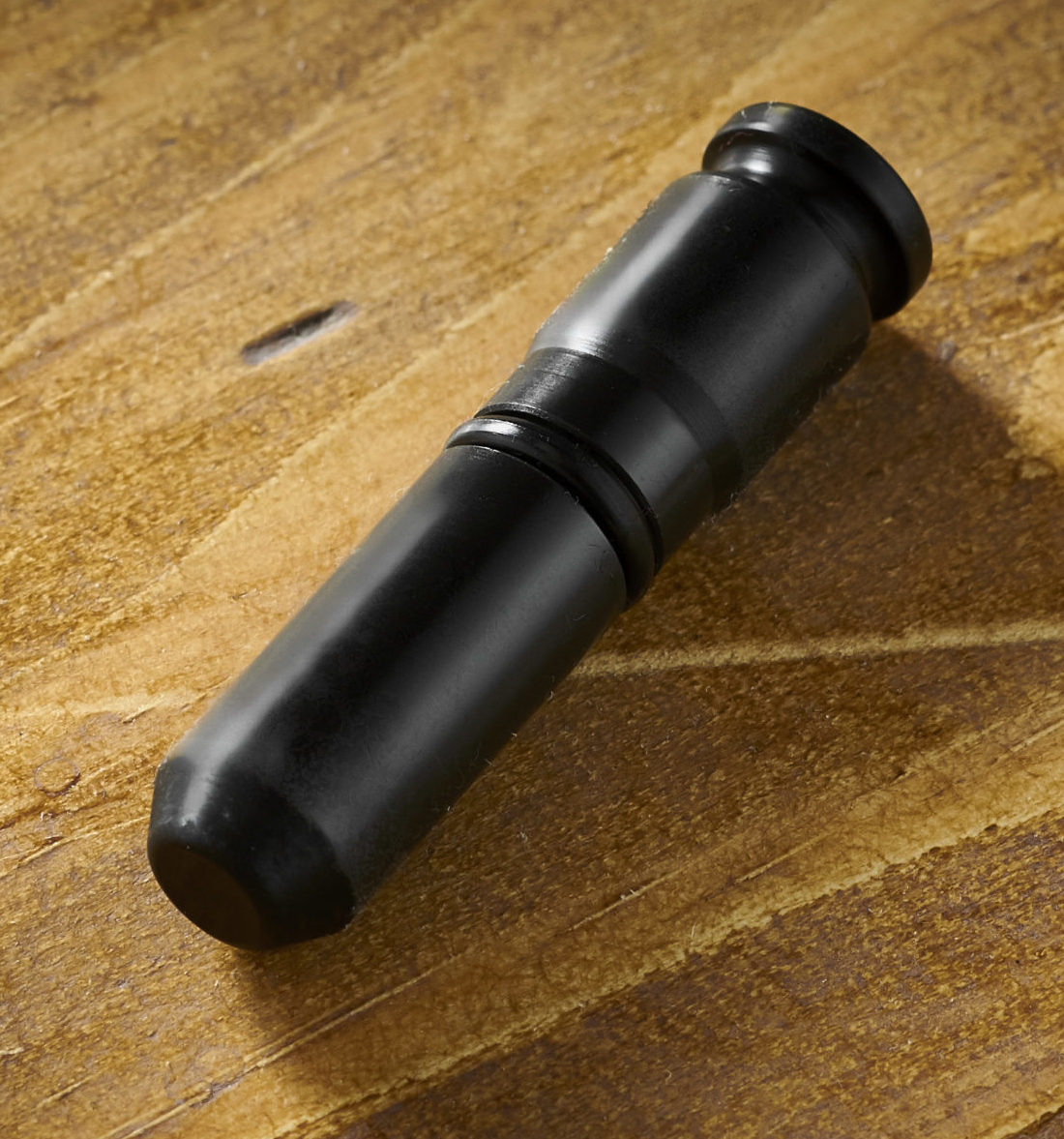
Dust plugs, such as this Delrin example, keep the fill port on the rifle’s onboard air cylinder nice and clean – a clogged port means trouble
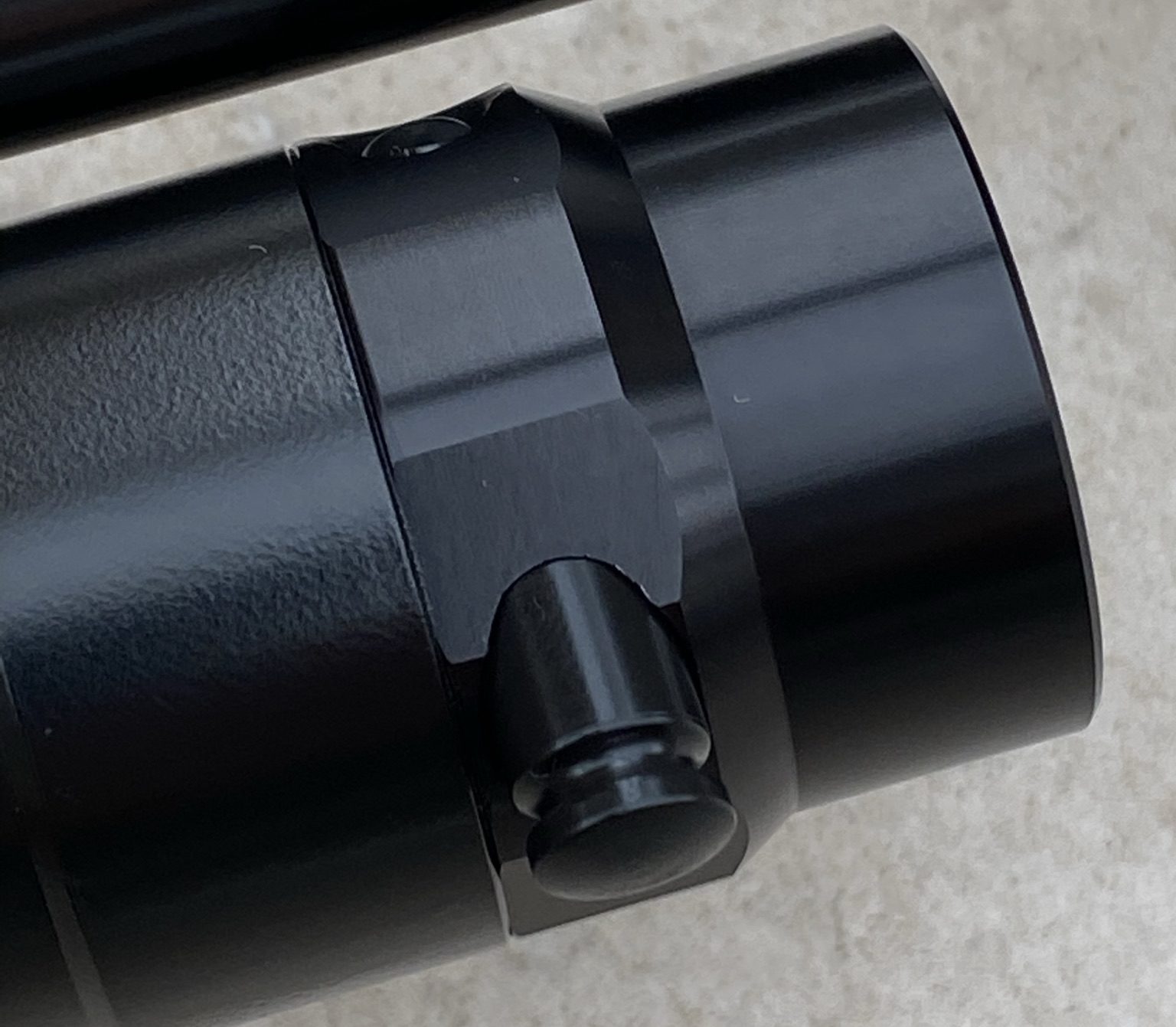
The dust plug usually needs to be inserted upside down, but there’s little danger of it falling out due to the O-ring
Some PCPs don’t have any type of fill port cover or plug. This is not good, and I’d recommend covering the port with a small piece of masking tape or electrician’s tape, although I’ve known some people who’ve used a small strip of bicycle inner tube or a thick elastic band – it will all depend on the layout of the rifle in question.
Luckily the HW100 S has a Delrin plug with a single O-ring. I lost one of these in the past and since then have adopted the habit of removing the plug for filling, placing it inside the little tin where I keep my fill probes, then replacing the probe in the tin and putting the plug back in the gun immediately after the rifle has been filled. Once you get into a routine like this you’re less likely to lose these small, but important little items.
Buying your first PCP air rifle – standard working pressure
While your partner may be more interested in SJP (any Sex And The City fans out there?), the PCP shooter is far more concerned with SWP – the standard working pressure the rifle is designed to be filled to.
This figure, which may also be referred to as PW (Pressure, Working), will usually be expressed in bar, but sometimes in pounds per square inch, and it will be found in the manual and/or on the rifle itself. The SWP of a pre-charged pneumatic will typically be anywhere from 200 bar to 250 bar.
The size of the air cylinder or buddy bottle on the rifle, when combined with its standard working pressure, will determine the shot count of the rifle.
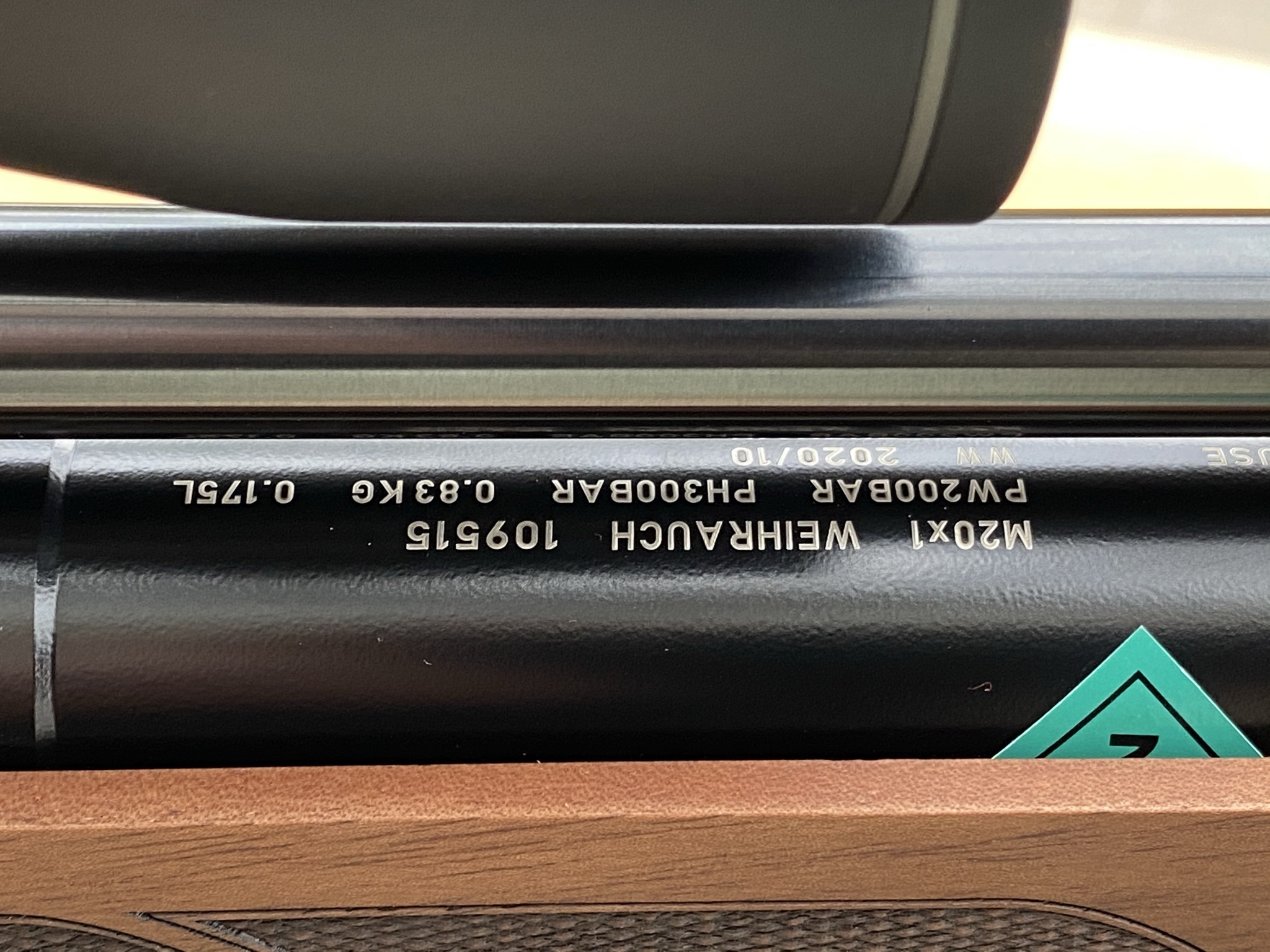
The orientation appears upside down due to the way the air cylinder has been screwed into the action, but the data tells us the working pressure is 200 bar.
It’s very tempting for the new shooter to think that they’ll be able to get more shots by putting in more air. They won’t. The rifle is designed to operate within a certain pressure range, and at best they’ll just be wasting air, and at worst they’ll be putting an unnecessary strain on the internal components.
Something else to consider is when to fill the rifle so it’s ready for the next shooting session. Some people like to keep their guns topped up so they are ready to “grab and go”, while others will fill their gun just prior to shooting. It’s really up to you.
One of my buddies does the former, while I do the latter, reasoning that there’s no point making the gun hold all that high-pressure air until it’s actually needed. So just choose the system that works best for you, remembering to top the rifle up when needed and to stop shooting when the pressure drops too low.
Biathlon handle
The HW100 S is activated by a sidelever, there’s nothing new there, but what is new is the inclusion of an optional biathlon handle – a drop-down handle that can be attached to the end of the lever.
Sidelevers offer a speedy method of cocking and cycling the action on a PCP, but it can sometimes be hard to locate the lever when the action’s fast and furious.
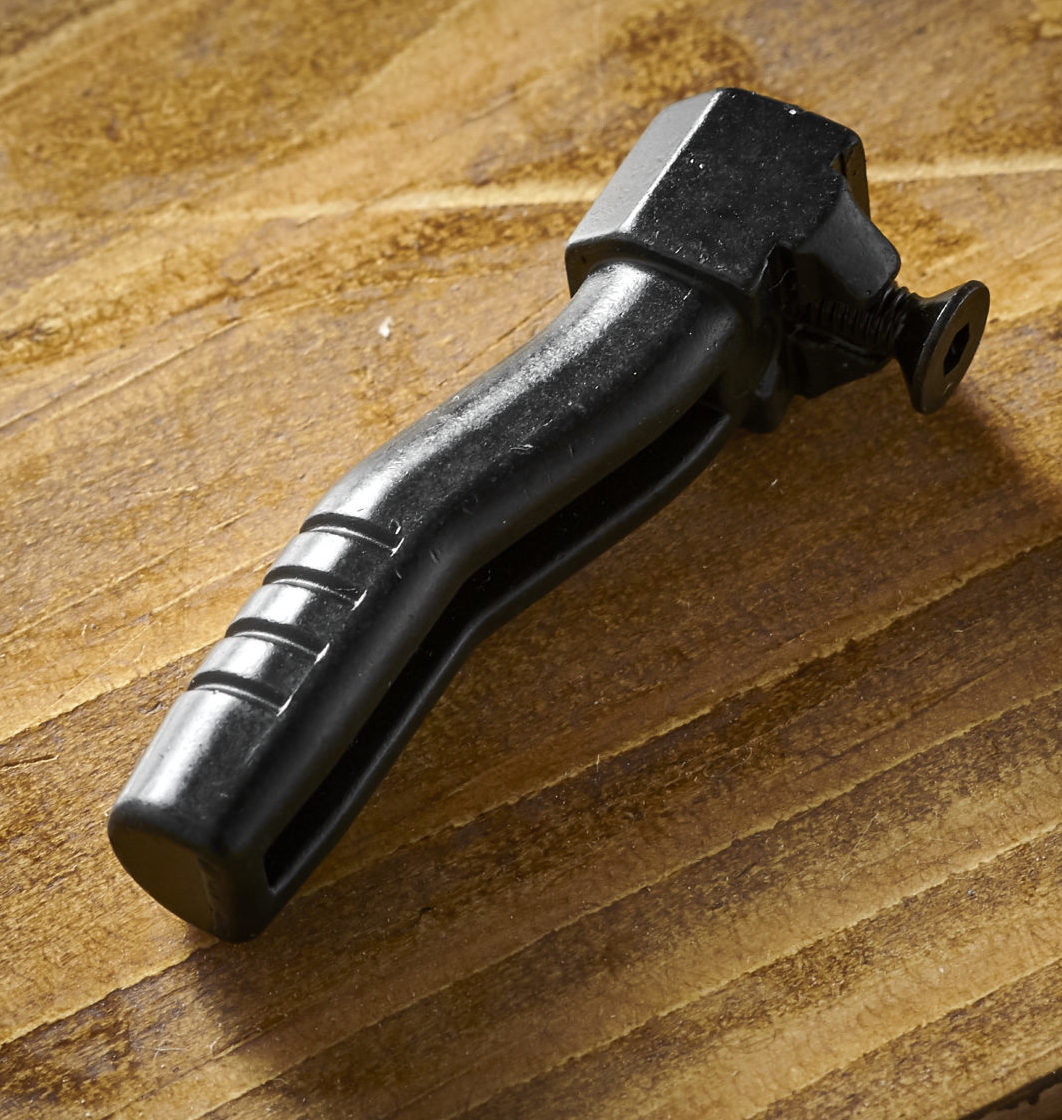
A biathlon handle makes it quicker to find the end of the sidelever when you’re in the aim, making follow-up shots flow faster.
If you don’t shoot a particular rifle very often, or if you frequently swap between guns which have sidelvers of slightly different lengths, shapes or sizes, you can sometimes waste a precious couple of seconds fumbling around for the end of the lever.
A biathlon handle takes its name from the winter sport that combines cross-country skiing and rifle shooting, where time is very much of the essence. A biathlon handle makes it so much easier to locate the main lever and cycle the action quickly, sometimes using just one or two fingers as an alternative to the standard pinch grip on the end of the main lever.
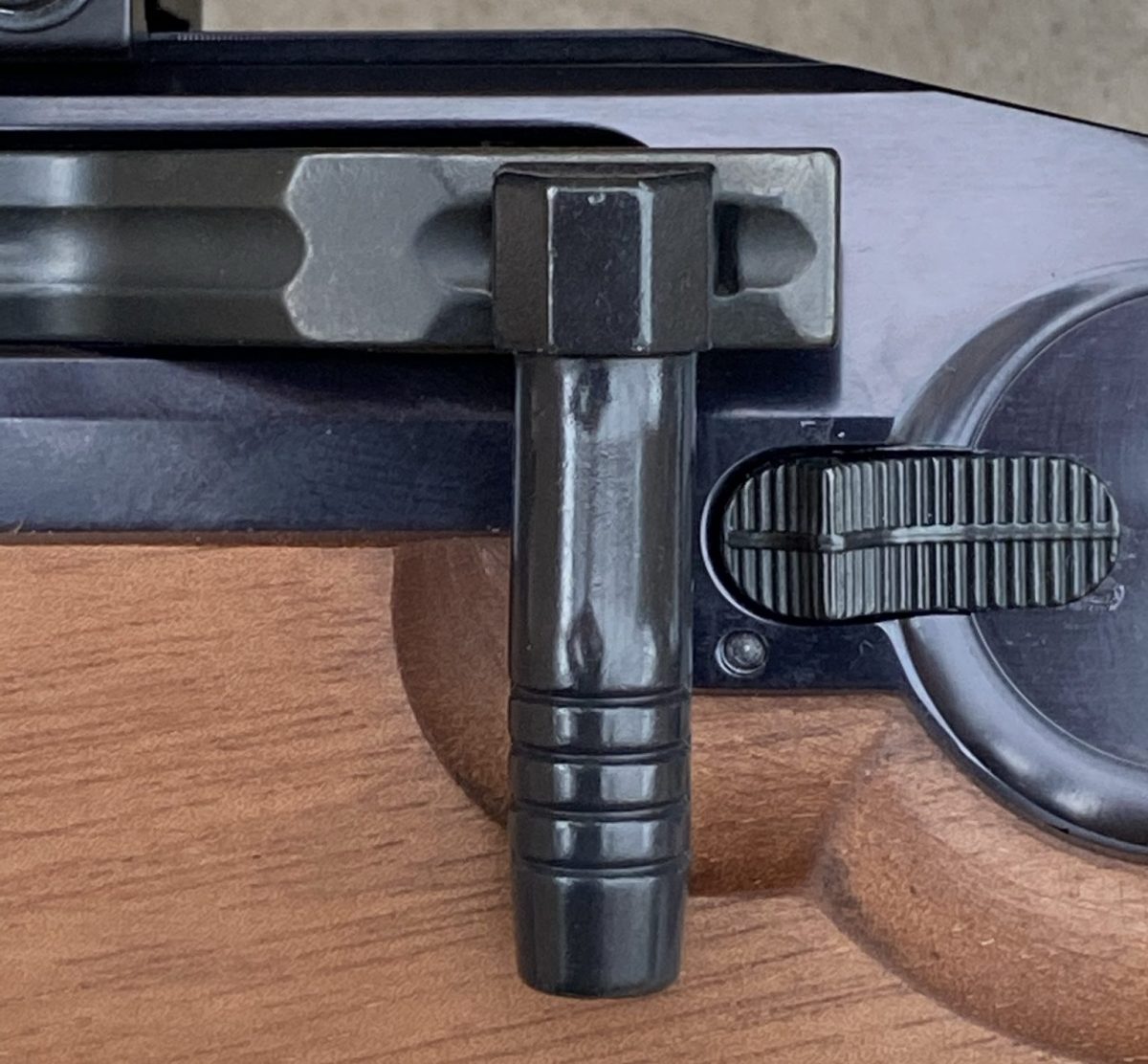
This HW biathlon handle fits neatly into a cutout in the sidelever and is then secured from behind with an unobtrusive little grub screw.
The one that comes with the Weihrauch slots into a neat cutout, after which it’s held in place with a screw. Some sidelevers can be fitted with an aftermarket biathlon handle, components like these usually being slipped over the tip of the sidelever.
If you use a handle like this, make sure it’s firmly pressed onto the end of the lever as far as it can go before screwing it in place. A fair bit of force may be required.
Magazine
Unless you’ve bought a single-shot PCP, your rifle will come with a magazine, and some manufacturers will even provide two. This is a great feature as loading a magazine can take quite a while and having two at the firing point or in your hide all ready to use means you can keep the action coming for far longer before it’s time to reload.
However, and this may sound a little controversial, if you’re a new shooter then can I suggest you put one magazine aside for now? There are a few tips and techniques to learn when loading and using a magazine, and it’s easier to concentrate on what you’re doing when only one mag is in play. And when the shooting’s over it’s easier to ensure the rifle has been made safe and you’re going home with just that one magazine.
If you have an open-style rotary magazine such as the one that comes with the Weihrauch, it’s important to know from which side the pellets are loaded.
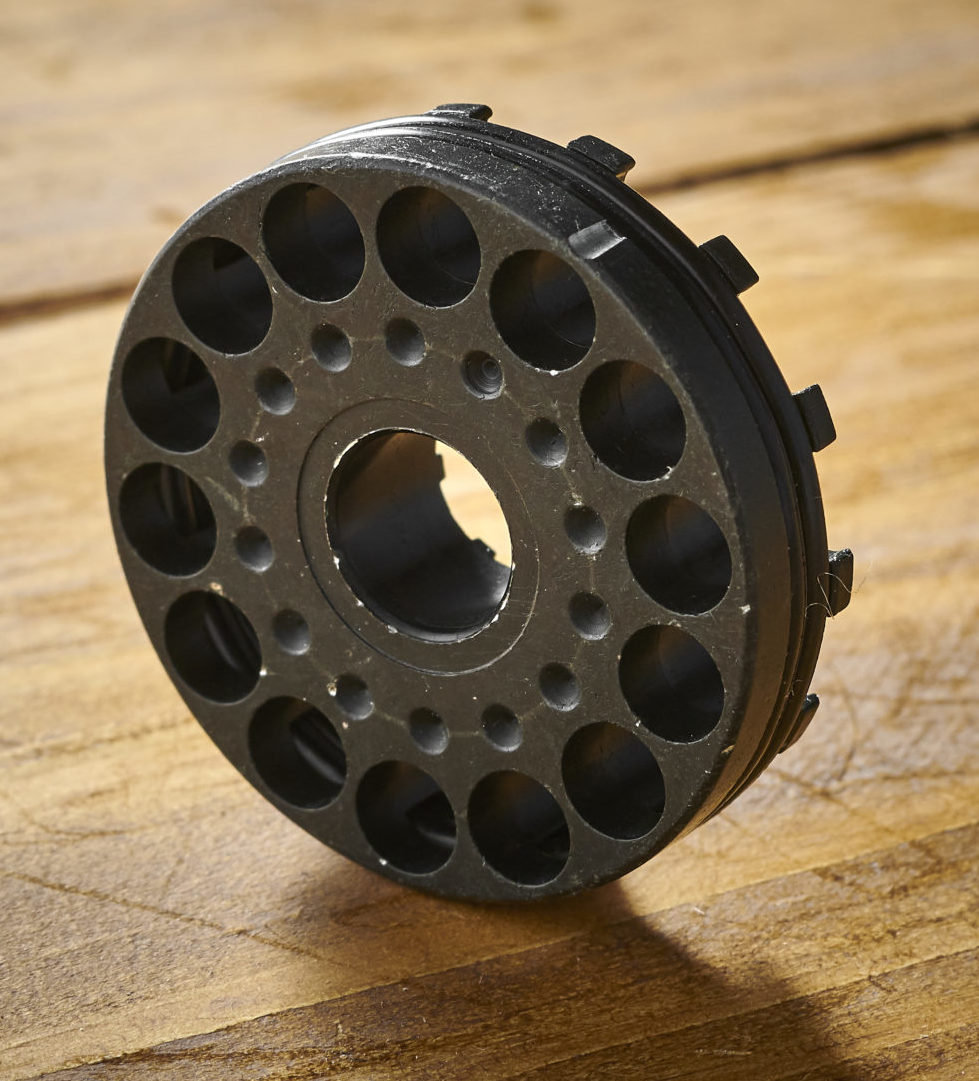
This rotary magazine isn’t enclosed in a housing, keeping it simple, but effective, but you do need to know from which side the pellets are loaded
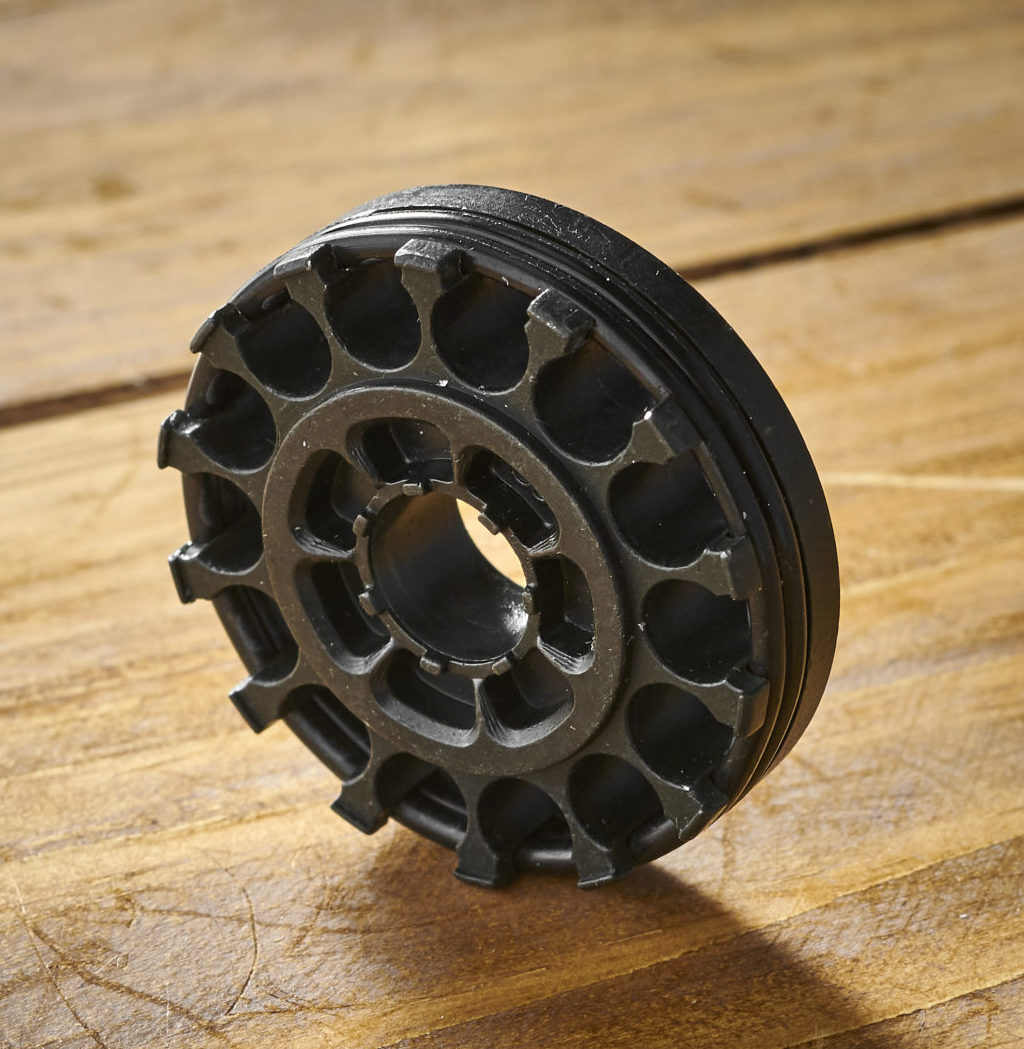
In the case of this HW magazine, pellets are loaded from this side, which faces the shooter when the magazine has been inserted into the action
We all get it wrong from time to time, but it’s a real faff realising you’ve pushed them in from the wrong side and having to pop them out again. It’s even more important to know from which side the magazine is loaded into the action. Some magazines can be inserted from either side, or can at least be adapted to be inserted from either side, but don’t try to force it in the wrong way.
Find out how many pellets your magazine can hold and adopt a system that lets you keep track of how many shots you’ve taken and how many pellets are remaining.
Enclosed magazines with an inner drum, such as those from BSA, Brocock and Daystate, use a coloured dot to let you know when you’re on your last shot. When that shot has been taken, the inner drum won’t turn any more.
Weihrauch’s open rotary magazine is a bit different as it will keep rotating inside the action as long as the rifle is being cocked and fired, even without any pellets remaining.
But the side of the magazine has a groove that’s been machined into it, and this can be used as a reference marker when shots are being taken and the magazine rotates.
In this case you know that when the magazine has made one full rotation and the marker appears again in exactly the same position as it started, you are now out of ammo.
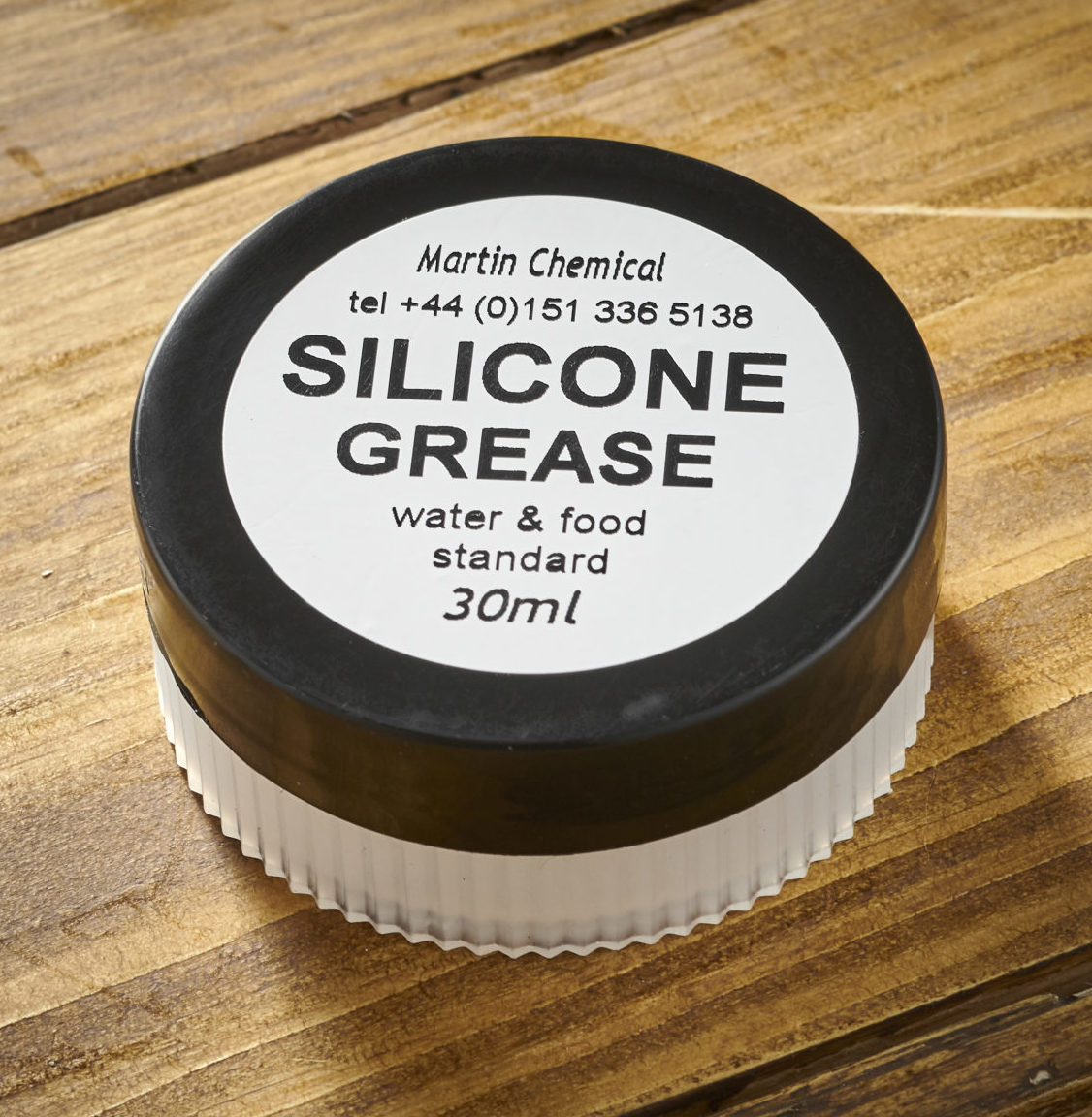
High-quality silicone grease is great for protecting the O-rings on the fill probe, dust plug and magazine, but too much grease may attract dirt.
The Weihrauch mag uses two large O-rings to hold the pellets in place.
I treat these just like the O-rings on the pellet probe and dust plug, and give them a very thin smear of silicone grease from time to time. If you have an enclosed mag, like the ones mentioned above, it may be tempting to lubricate these too, but it’s best not to, however, as the mechanism can quickly gum up and foul the smooth operation of the magazine.
Enclosed magazines can be stripped down, cleaned and tuned, but that’s not something new shooters should attempt as it can lead to missing parts and much heartache!
Picatinny rail
My HW100 S is fitted with a traditional dovetail rail, but it comes with an optional Picatinny rail as well. A few years ago a rail such as this was seen as the preserve of the military, which is not surprising considering how it was designed for the US armed forces at Picatinny Arsenal in New Jersey. Nowadays however, air rifles may come with dovetail only, Picatinny only, or a hybrid rail that can accept either mounting system.
Engineers at Picatinny Arsenal developed this alternative mounting system for the US military, but airgun shooters can benefit from fitting a Picatinny rail to their rifles as well.
The Picatinny system uses a series of slots into which a corresponding bar on the mount is dropped and then secured.
It was developed to let different optics and accessories be swapped over quickly, to maintain zero when the original optic was swapped back again and to prevent scope creep under recoil.
Air rifles benefit from all these advantages too, but some people simply don’t like the look of the Picatinny system, preferring the simple elegance of the traditional dovetail. Whichever system you end up with, just remember you’ll need dedicated mounts to match.
Moderator
Many PCPs, the HW100 S included, are supplied with a moderator, while those that don’t already have one in the box are usually capable of being fitted with one bought separately. Air rifles are noisier than many people think.
While air rifle hunters will want to fit a moderator to remain stealthy in the field, club shooters will benefit too, as will people who enjoy shooting in the garden without incurring the wrath of their neighbours.
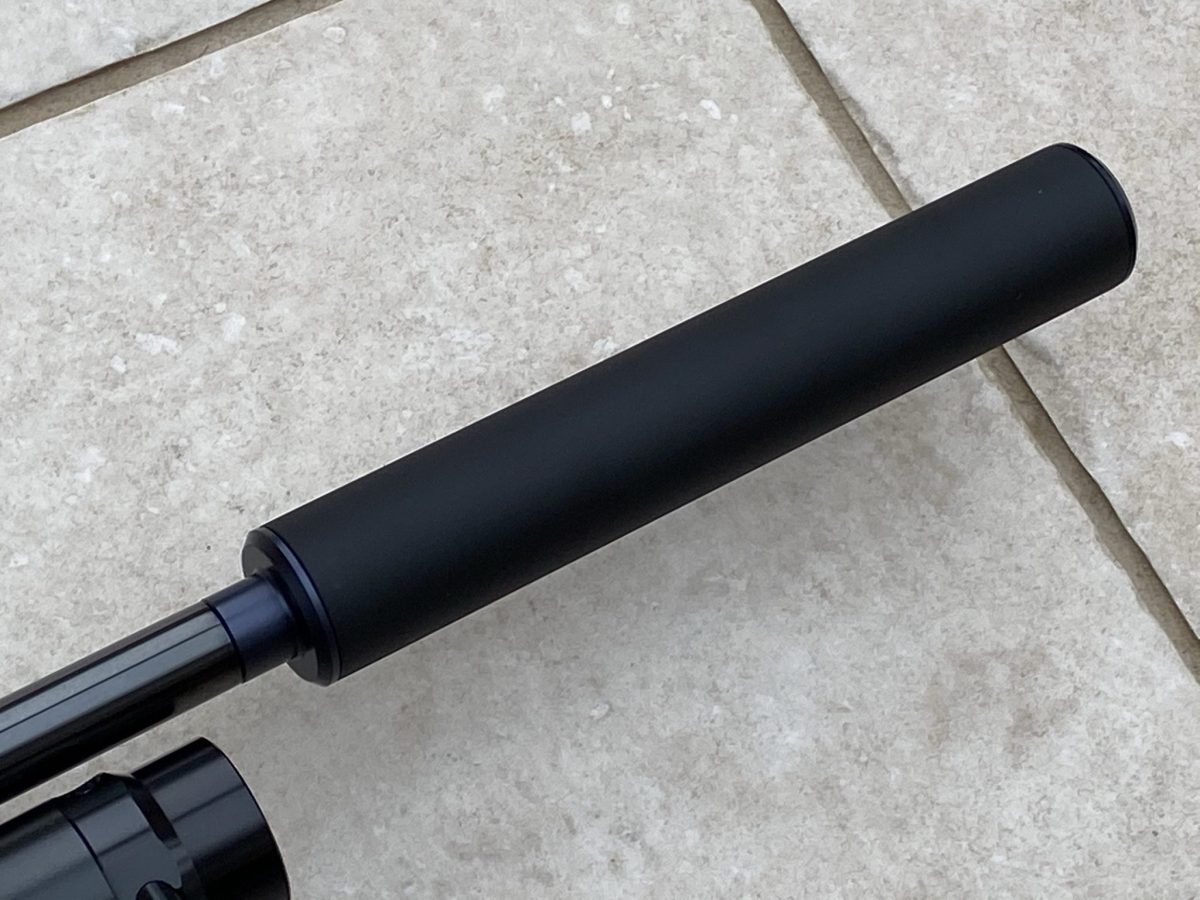
This is Weihrauch’s latest slimline moderator design, where the base of the moddy matches the diameter of the barrel for a cleaner look
Virtually all modern air rifle barrels that can accept a moderator will have been threaded to a standard called ½” UNF (unified fine), and in turn most moderators designed for airgun use will also be ½” UNF. This isn’t really something you need to pay too much attention to, but there are some threads that don’t use the ½” UNF standard, so you just need to be aware of this.
The only penalties to using a moderator are the financial cost, if your gun doesn’t already come supplied with one, plus the additional length and weight. Some moderators may affect a rifle’s point of impact, in which case the rifle will have to be re-zeroed.
While the rifle will always be the star of the show, these smaller items work together to make everything tick smoothly. If you’re a newcomer to the sport, just remember to keep it clean, keep it safe and keep on shooting!
Related Articles
Get the latest news delivered direct to your door
Subscribe to Shooting Times & Country
Discover the ultimate companion for field sports enthusiasts with Shooting Times & Country Magazine, the UK’s leading weekly publication that has been at the forefront of shooting culture since 1882. Subscribers gain access to expert tips, comprehensive gear reviews, seasonal advice and a vibrant community of like-minded shooters.
Save on shop price when you subscribe with weekly issues featuring in-depth articles on gundog training, exclusive member offers and access to the digital back issue library. A Shooting Times & Country subscription is more than a magazine, don’t just read about the countryside; immerse yourself in its most authoritative and engaging publication.







